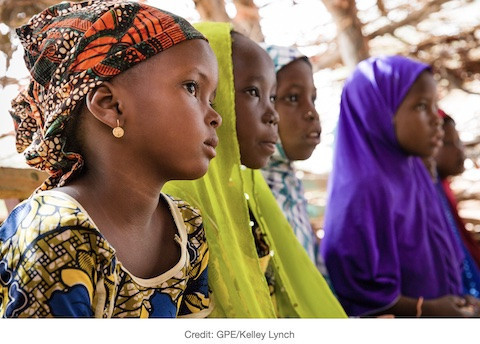
GCED Basic Search Form
Quick Search
You are here
News

By Alina Lipcan, Director of Impact and Innovation at the Global Schools Forum (GSF) and Modupe Adefeso-Olateju, Managing Director of Nigeria’s TEP Centre and an adviser to GSF’s Learning Labs Programme.
This week’s Global Education Summit is an important moment as governments, foundations and others commit funds to support systems to recover from the educational consequences of COVID-19 and tackle the wider learning crisis.
But whilst the amount of funding pledged is important, so too will be ensuring that funds are spent effectively, and that spending results in improvements to learning outcomes. In our view, a key part of that will be investing in supporting education systems to innovate.
Supporting innovation is not just beneficial in the short term but can also increase resilience to future crises. Over the last year, in response to the pandemic, we’ve seen governments and educational organisations across the world problem-solve, experiment, iterate, and partner for scale. The result has been new, cost-effective models to equitably and sustainably deliver education, benefiting children across the world. In Uganda, Rwanda, and Kenya, Educate! conducted skills training with young people via SMS and conference call. Rising on Air partnered with governments in Liberia and Sierra Leone, among others, to deliver radio lessons. In Botswana, Young 1ovepartnered with district-level and national-level officials to adapt the Teaching at the Right Level curriculum for the pandemic.
The benefits of supporting innovation are very high. Michael Kremer estimates that USAID’s early investments as part of the Development Innovations Venture generated a 5:1 ratio of social benefits to costs. That is, the benefits of supporting successful innovations far outweighed the costs of investing in failed innovations.
We need to build on these advances and create an ecosystem which enables this resourcefulness to continue, ensuring that future crises cannot catch us unprepared. This means:
- More funding to de-risk innovation
Despite the benefits, education innovations are underfunded overall, and are often ignored by international aid funds. The use of Official Development Assistance (ODA) for innovation is less significant than other sources of funding such as philanthropic and domestic government funding, or donations from individuals and communities. In 2017 only 11% of education innovations were funded by international aid dollars. More ODA for innovation could help amplify the benefits of existing private and domestic investments in the space and further align them with governments’ education sector goals. It could also catalyse new blended finance initiatives, multiplying the private capital invested in this space.
- Embedding routes to scale from the outset
Globally, education innovations are more likely to originate in the non-state sector than in government. According to Brookings, 62% of innovations in the education space were initiated by NGOs, 26% by private sector companies, and only 12% by governments.
Yet governments remain a key route to scale for many innovations. Without government as a trusted partner, it is nearly impossible for education innovations to achieve scale and amplify their impact. Innovators should therefore look to partner with governments to:
- Assess an innovation’s alignment with national education sector plans;
- Fund and direct international aid resources to innovation – with smaller bets for the earlier stages, and larger bets on innovations with more evidence;
- Incorporate a clear plan for creating and using evidence about the innovation’s effectiveness;
- Evaluate initial cost-effectiveness evidence, and plan for adaptation and iteration;
- Select the best models through which an innovation can be scaled up;
- Embed the innovation into public systems.
This requires that innovators are aware of political agendas, build partnerships, cultivate champions, and communicate about evidence. It may also require that innovators are willing to give up their ‘brands’ as these innovations are institutionalised in government systems.
- Strong communities of practice using evidence on what works and what doesn’t.
Innovations don’t tend to spread in education because, in part, education innovators do not often publicly share their own data about what has worked and what hasn’t, and why. Addressing this issue requires strong and active communities of practice which (i) support innovators and governments to be more evidence-driven, (ii) share evidence of successes and failure openly and in digestible formats, and (iii) encourage quick and deep learning through regular engagements and peer-learning.
We strongly encourage the global education community to build on existing initiatives to support innovation to expand, deepen and sustain the impact of effective education innovations. This includes supporting knowledge exchange, evidence building, and innovative finance. At Global Schools Forum, we have long acted as a thriving community of practice for promising education innovations. With the support of Jacobs’ Foundation, we are looking forward to expanding our role as we launch a new Learning Labs initiative this autumn, which will fund and support our community to unlock and test innovations across our network. We very much look forward to sharing what works, what doesn’t and why more widely in due course.
URL:
